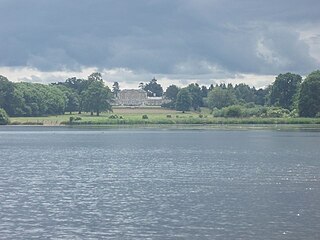
The Sussex Wildlife Trust (SWT) is a conservation charity which aims to protect natural life in Sussex. It was founded in 1961 and is one of 46 wildlife trusts across the UK and the Isle of Man and Alderney. As of 2019, it has 33,000 members and manages 2,000 hectares of land for nature. It is a registered charity and in the year to 31 March 2019 it had an income of £5.7 million and expenditure of £4 million, resulting in net income of £1.7 million.

Hilgay Heronry is a 1.8-hectare (4.4-acre) biological Site of Special Scientific Interest south of Downham Market in Norfolk.

Ashburnham Park is a 109.9-hectare (272-acre) biological Site of Special Scientific Interest north-west of Hastings in East Sussex. It is a Nature Conservation Review site, Grade 2. The park is the garden of Ashburnham Place and it is listed on the Register of Historic Parks and Gardens of Special Historic Interest.

Bingletts Wood is a 16-hectare (40-acre) biological Site of Special Scientific Interest east of Heathfield in East Sussex.

High Woods is a 33.7-hectare (83-acre) biological Site of Special Scientific Interest on the northern outskirts of Bexhill-on-Sea in East Sussex. It is owned by Rother District Council and managed by Highwoods Preservation Society.

Maplehurst Wood is a 31.6-hectare (78-acre) biological Site of Special Scientific Interest on the northern outskirts of Hastings in East Sussex.

Plashett Park Wood is a 157.6-hectare (389-acre) biological Site of Special Scientific Interest between Lewes and Uckfield in East Sussex.

Fore Wood is a 20.9-hectare (52-acre) biological Site of Special Scientific Interest north-west of Hastings in East Sussex. It is part of the Royal Society for the Protection of Birds nature reserve of the same name.

Marline Valley Woods is a 55.1-hectare (136-acre) biological Site of Special Scientific Interest on the western outskirts of Hastings in East Sussex. An area of 40.3 hectares is a Local Nature Reserve owned by Hastings Borough Council and managed by the Sussex Wildlife Trust.

Waltham Abbey SSSI is a 34.2-hectare (85-acre) biological Site of Special Scientific Interest which is located within the Waltham Abbey Royal Gunpowder Mills at Waltham Abbey in Essex.

Southill Lake and Woods is a 25.3-hectare (63-acre) biological Site of Special Scientific Interest in Southill in Bedfordshire. It is part of Southill Park, which was designed by Capability Brown, and is registered by English Heritage for its special historic interest, and is the garden of a house of the same name.

Thorpe Morieux Woods is a 45.2-hectare (112-acre) biological Site of Special Scientific Interest north of Thorpe Morieux in Suffolk. Part of it is Bull's Wood, a nature reserve managed by the Suffolk Wildlife Trust.

Briery Wood Heronry is a 5.7-hectare (14-acre) biological Site of Special Scientific Interest in the grounds of Belvoir Castle in Leicestershire.

Northward Hill is a 52.5-hectare (130-acre) biological Site of Special Scientific Interest Kent. It is a Nature Conservation Review site, Grade 2, and is also designated High Halstow National Nature Reserve The site is managed by the Royal Society for the Protection of Birds.

Islington Heronry is a 1.3-hectare (3.2-acre) biological Site of Special Scientific Interest south-west of King's Lynn Norfolk.

Parham Park SSSI is a 263.3-hectare (651-acre) biological Site of Special Scientific Interest in the grounds of Parham Park, west of Storrington in West Sussex. It is a Nature Conservation Review site, Grade 2.

West Dean Woods is a 16.3-hectare (40-acre) biological Site of Special Scientific Interest north of West Dean in West Sussex. It is managed by the Sussex Wildlife Trust.

















